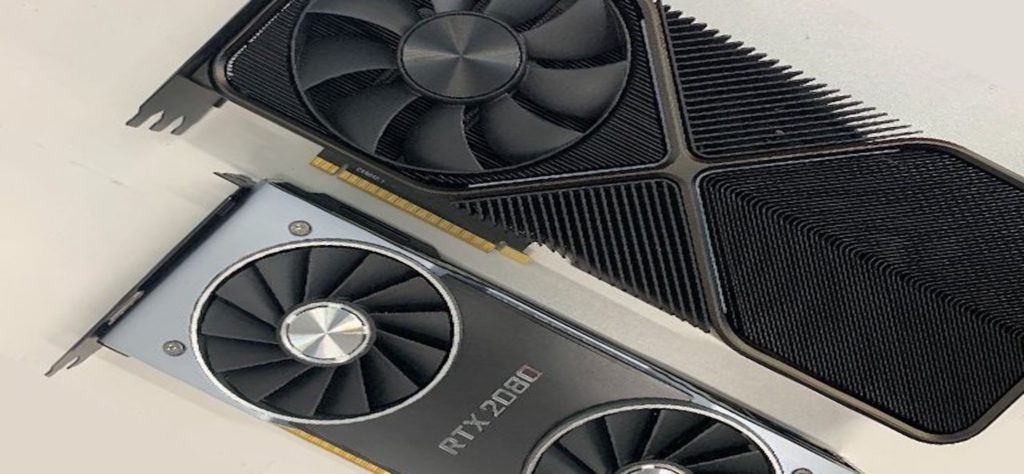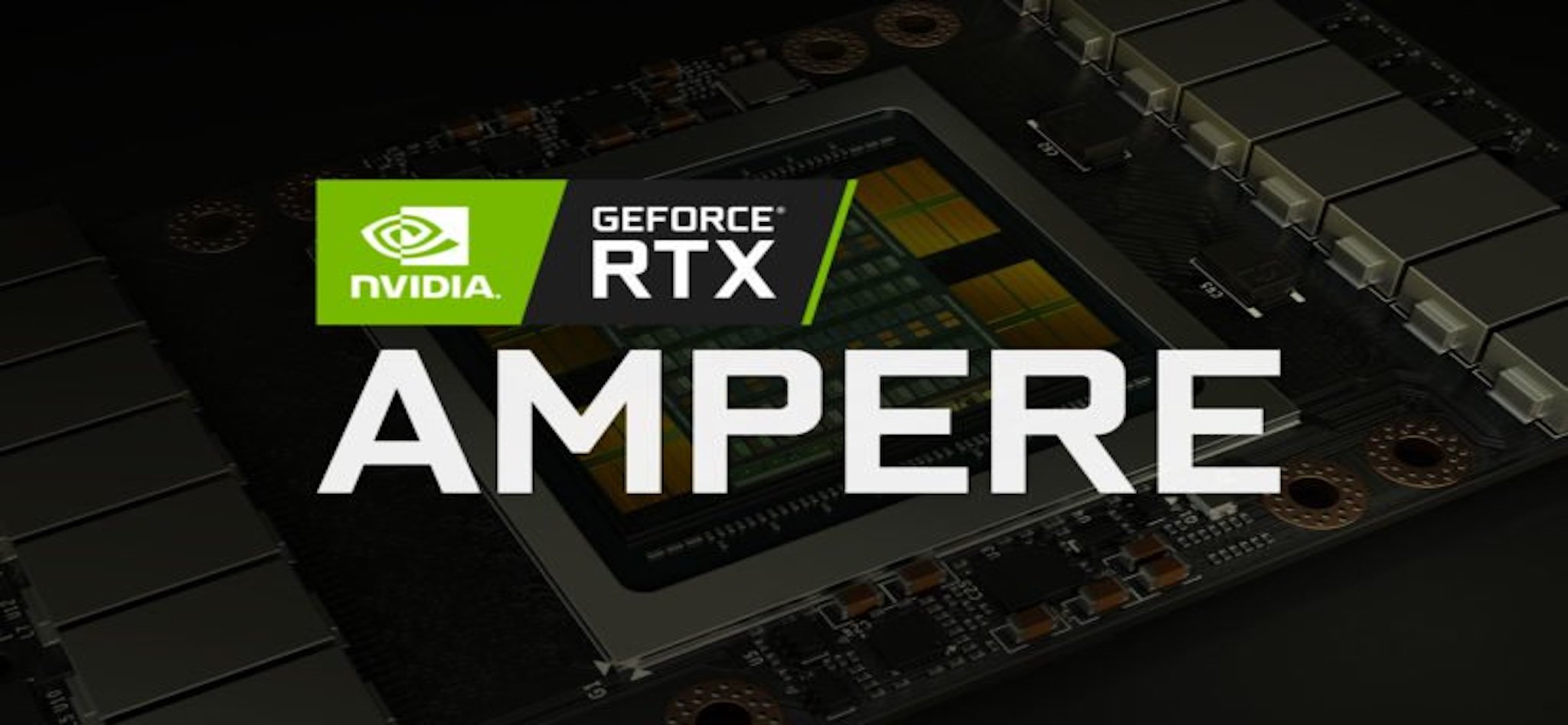VideoCardz has the scoop on Nvidia’s forthcoming trio of GeForce RTX 30-series (codename Ampere) graphics cards that are to be released on September 1st. Even though the publication has a solid track record, nothing is official yet.
The report says Ampere will debut with Nvidia’s second-generation Ray Tracing (RT) cores and third-generation Tensor cores. The Turing architecture incorporated RT and Tensor cores, so it’s natural that Ampere follows suit. There was no way that Nvidia would abandon the RT and Tensor after only one generation, considering that they are two attributes that differentiate current GeForce offerings from AMD’s Radeon graphics cards.

The A100 is a product of TSMC’s 7nm FinFET process node. VideoCardz claims that the anonymously-obtained information pointed to the usage of the 7nm process node on consumer graphics cards as well, but the news outlet was unable to confirm it. Consumer Ampere will likely leverage PCIe 4.0, which is predictable since the A100 GPU supports the snappy interface. In regards to display outputs, Ampere presumably has native support for HDMI 2.1 and DisplayPort 1.4a outputs.
Moving on to the specifications, the GeForce RTX 3090 is rumored to come with the GA102-300 silicon, which brings 5,248 CUDA cores to the table. The graphics card sports 24GB of GDDR6X memory that runs across a 384-bit memory interface. This design amounts to a memory bandwidth of 935.8 GBps. The graphics card’s TGP (total graphics power) is estimated at 350W, meaning custom models will likely rely on a pair of 8-pin PCIe power connectors. As Nvidia has revealed recently, the Founders Edition will only need a single 12-pin PCIe power connector.

A bit of mystery still surrounds the GeForce RTX 3070, though. The graphics card may debut at the end of September. The rumored specifications include 8GB of GDDR6 memory and a 220W TGP. The exact speed of the memory chips is unknown, but VideoCardz thinks that they might come clocked at 16 Gbps.

